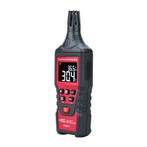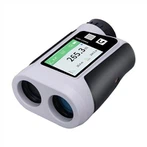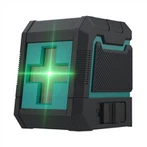An application for infrared cameras
From April to June 1982, the Malvinas Islands War broke out between Britain and Argentina. At midnight on April 13, the British army attacked Port Stanley, the largest stronghold of the Cheng army. The minefield laid by 3,000 British troops suddenly appeared in front of the Afghan defense line. All guns and artillery in the UK are equipped with infrared night vision devices (portable thermal imaging cameras, the same below), which can clearly detect the targets of the Afghan army in the dark. However, the Ah army lacked night vision devices and could not detect the British army, so they could only be beaten passively. Under the accurate firepower of the British army, the Afghan army could not support it, and the British army took the opportunity to charge. By dawn, the British army had occupied several major commanding heights on the Afghan defense line, and the Afghan army was completely under the fire control of the British army. At 9:00 pm on June 14, 14,000 Afghan troops had to surrender to the British. The British Army won an outnumbered battle ahead of infrared night vision equipment.
In the Gulf War in 1991, on the battlefield filled with wind, sand and gunpowder, due to the advanced sensor technology of the US military, they gained a comprehensive information advantage in the war-infrared thermal imaging cameras, thermal imaging cameras equipped on M1A1 tanks at night or in smoke Under certain conditions, it can identify targets within 1500 meters, and the detection distance is as far as 3000 meters. The Iraqi T-72M is only equipped with the second-generation low-light night vision device, with a maximum detection range of 800 meters or even shorter. This makes it common for M1A1 tanks to fire at the enemy first, and the airborne forward-looking infrared thermal imaging camera can find Iraqi tanks buried under the sand. After the war, many Iraqi tank soldiers and prisoners recalled that they could only fight back at the flames of the muzzle. Therefore, the contest between T-72M and M1A1 in the Gulf War is like a blind man fighting a sighted person, and the sighted person is stronger. The T-72M's record of 0 is not enough. Strange. From this we can see the important role of infrared night vision equipment in modern warfare. The U.S. military showed a huge advantage in informationization during the Gulf War. In the end, the U.S. military only lost a few tanks, and there were no casualties, while more than 3,000 of Iraq's more than 5,000 tanks were destroyed.
In the explosion test, the high-speed infrared thermal imaging camera can detect the temporal and spatial distribution of the surface temperature of the explosive fireball, expanding the test range from both time and space. A high-speed thermal imaging camera with a speed of more than 500 frames per second (500HZ) can describe the explosion process more clearly, and the data obtained by the thermal imaging camera can optimize the dynamic characteristics of the fuel throwing process during the explosion process, so as to select Reasonable device parameters are of great significance for improving the energy output of the blast wave and achieving high-power damage effects.






